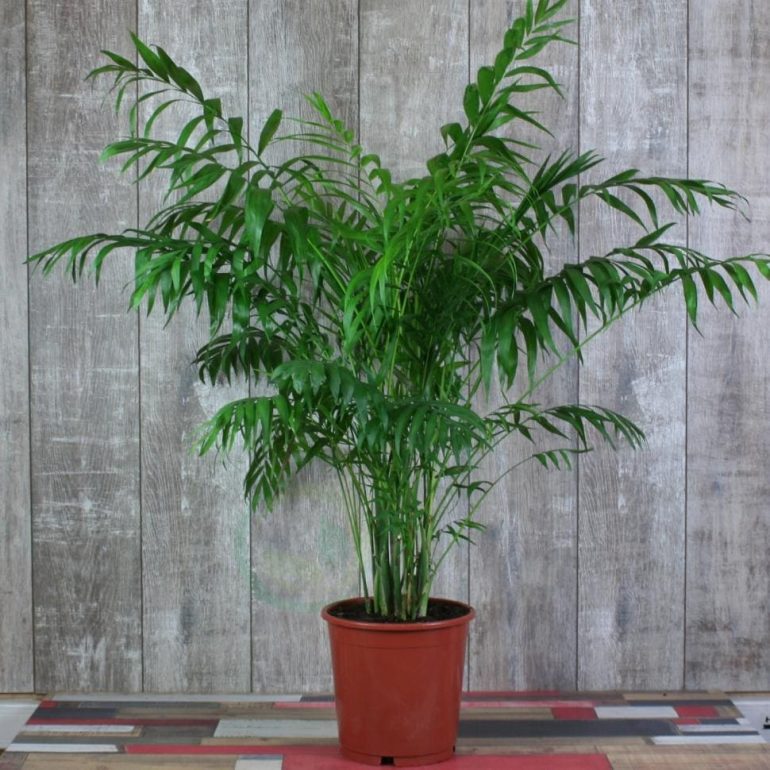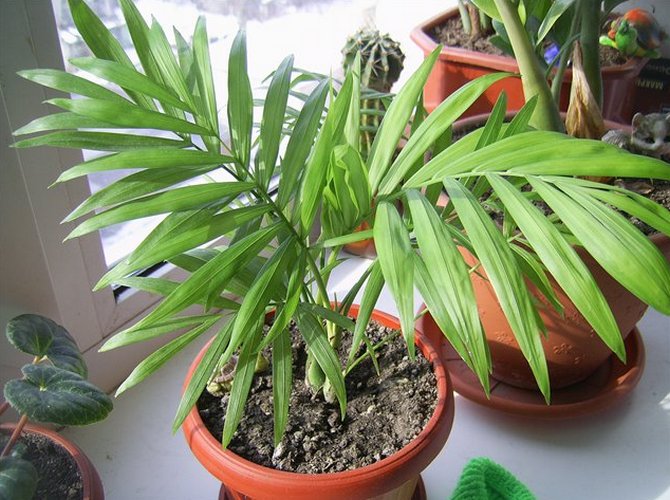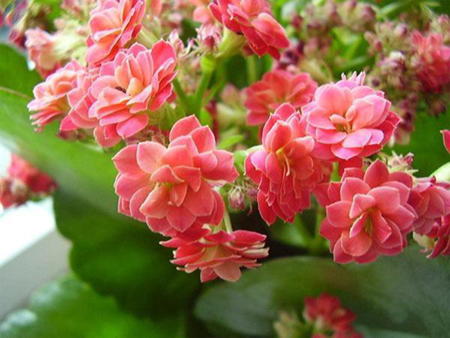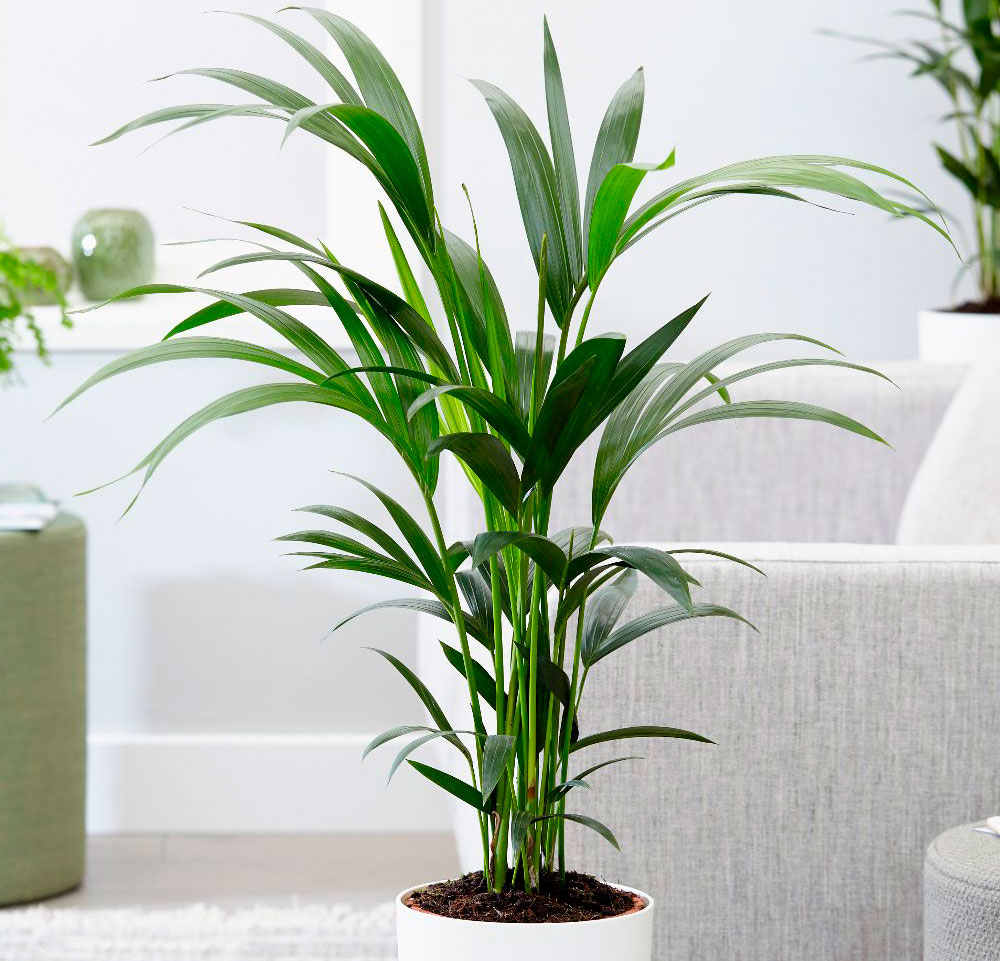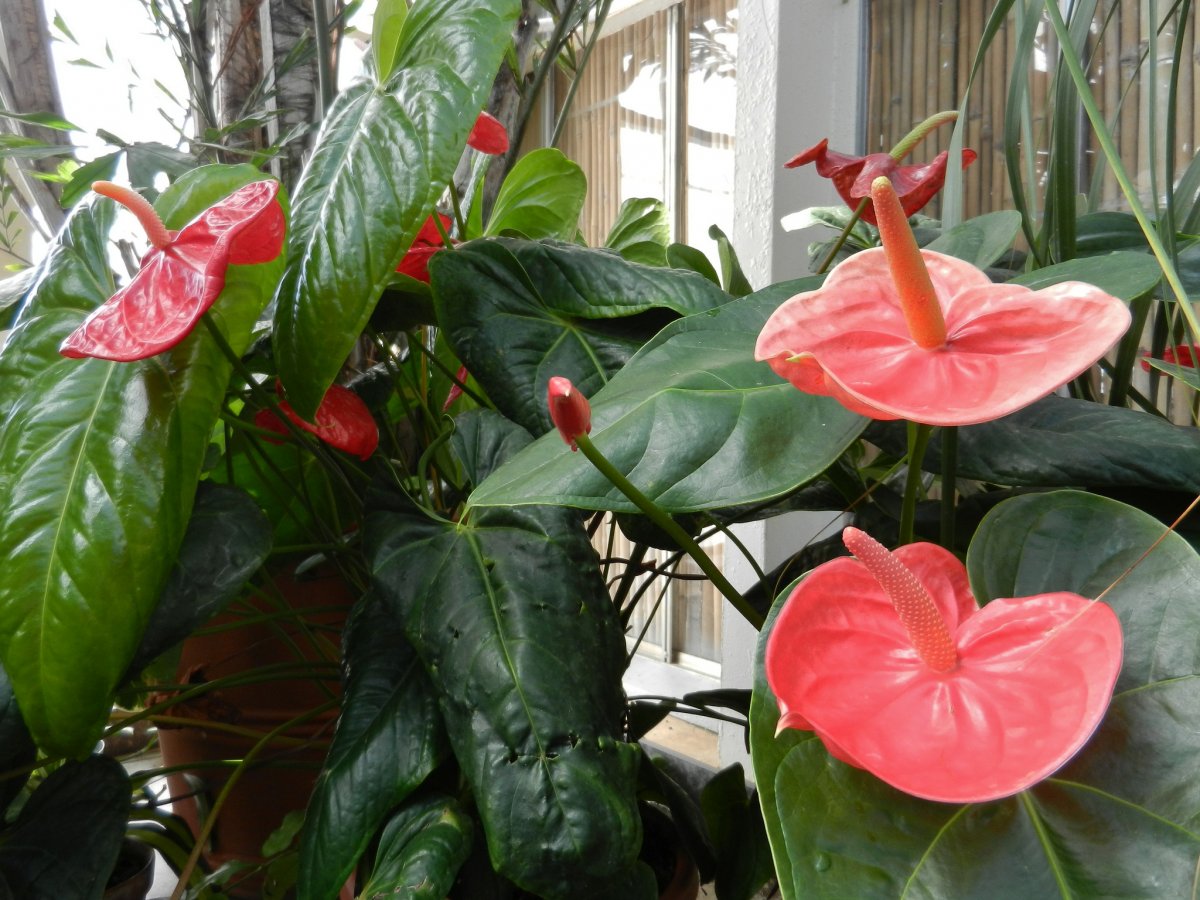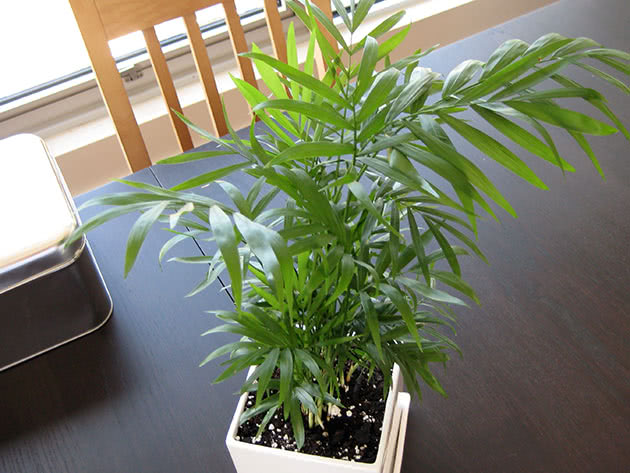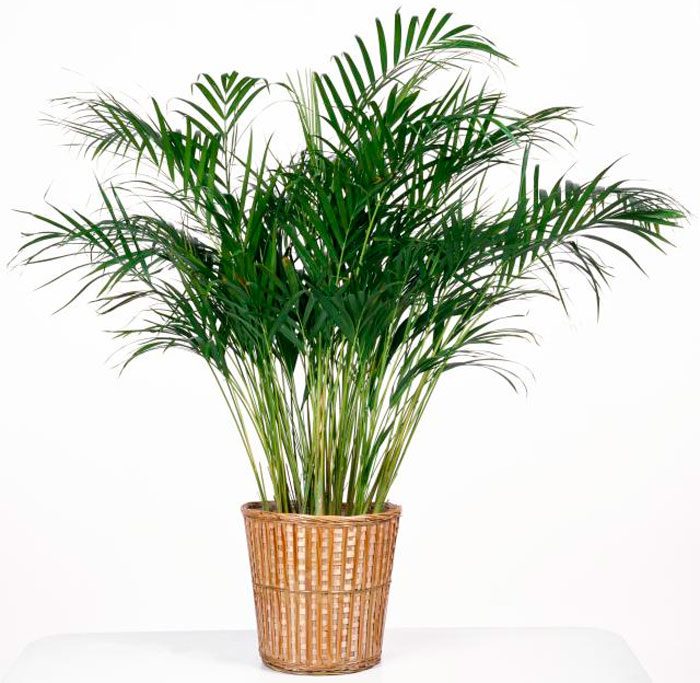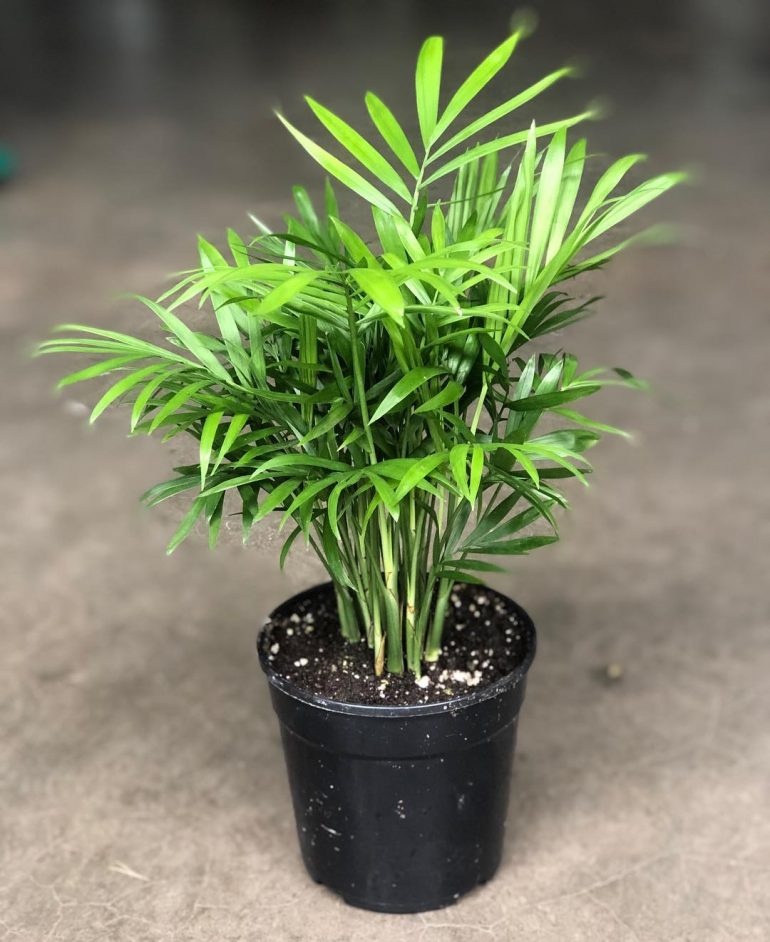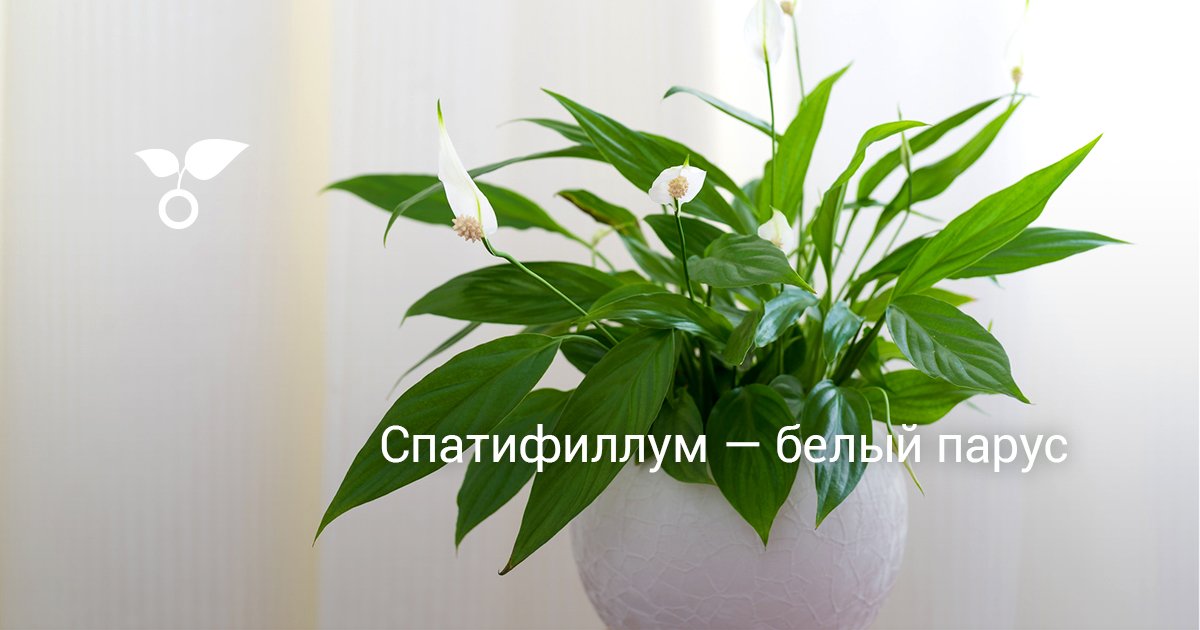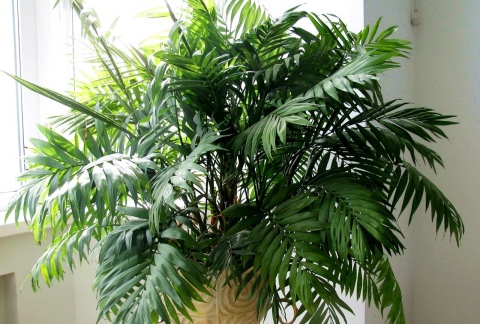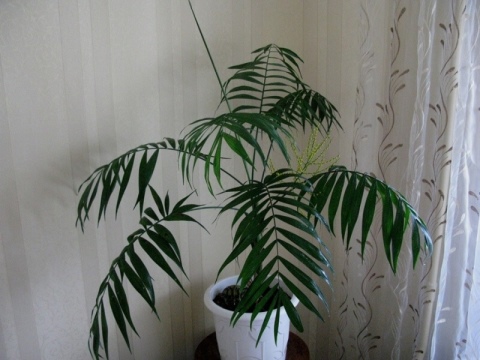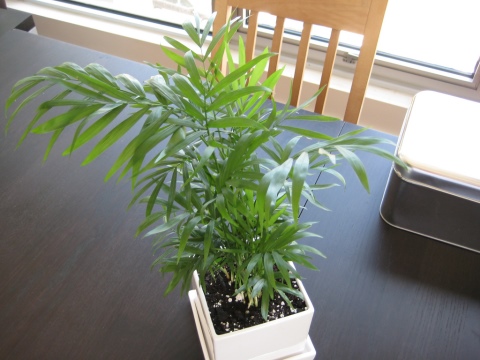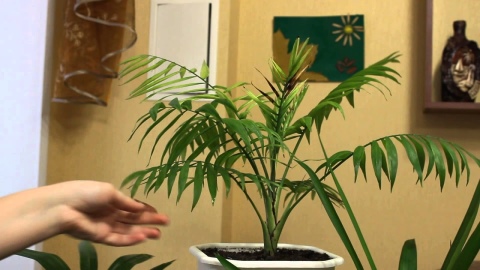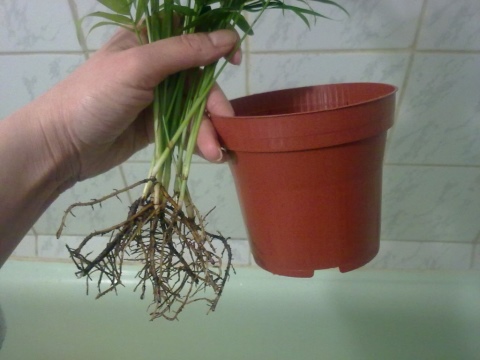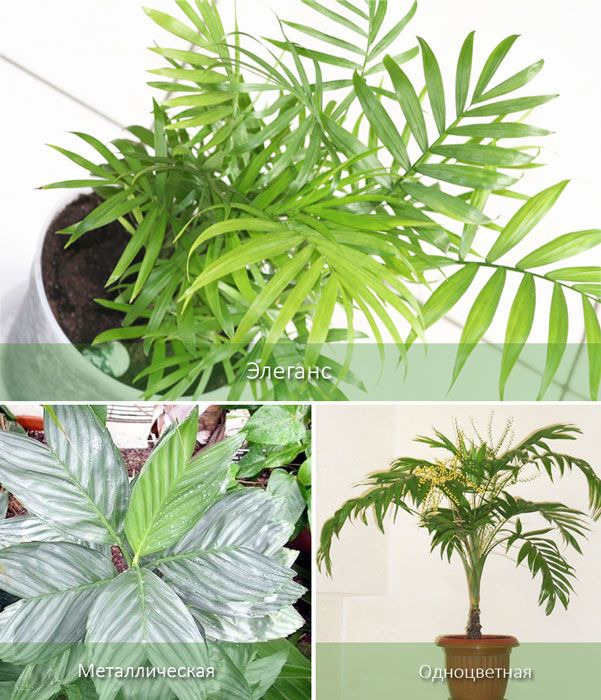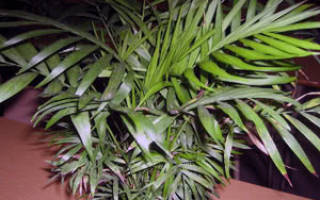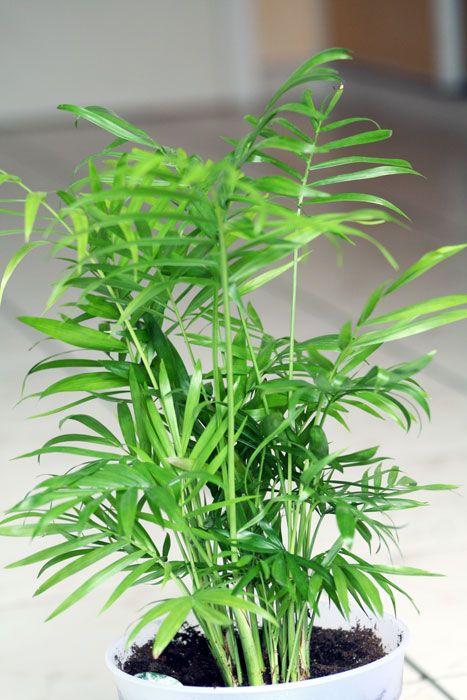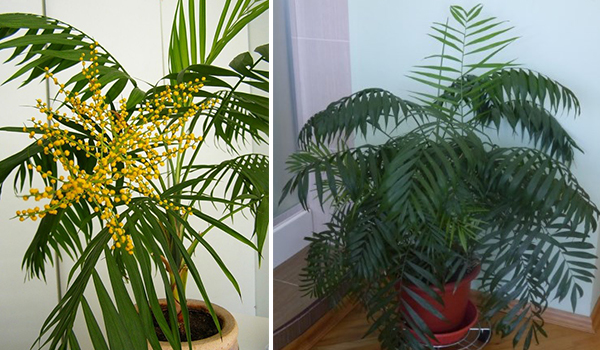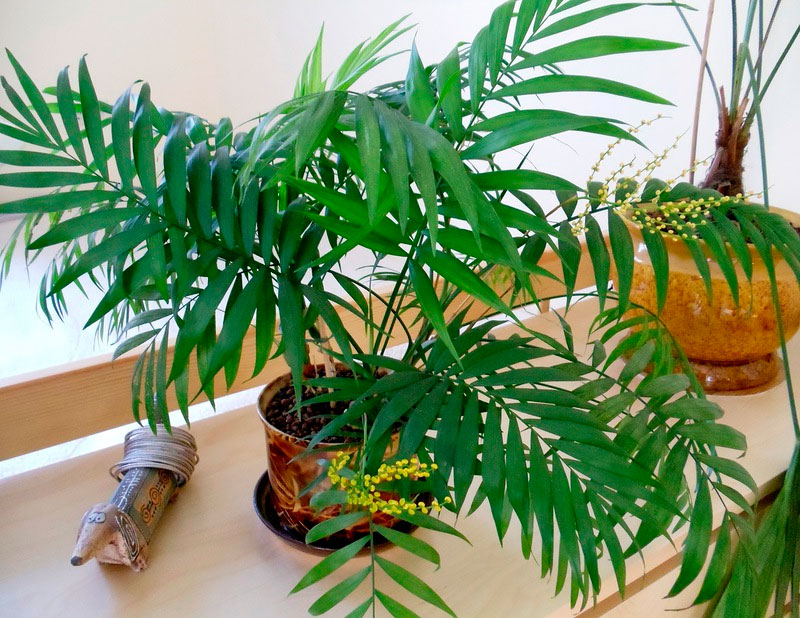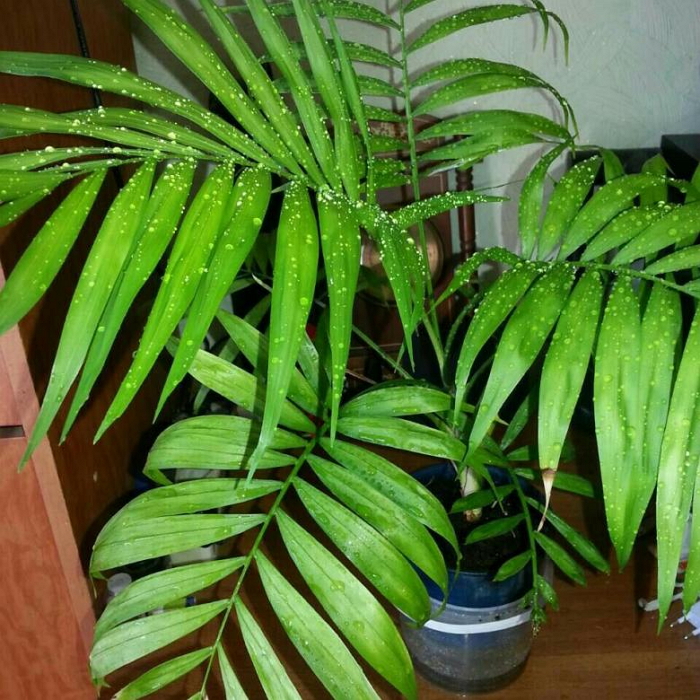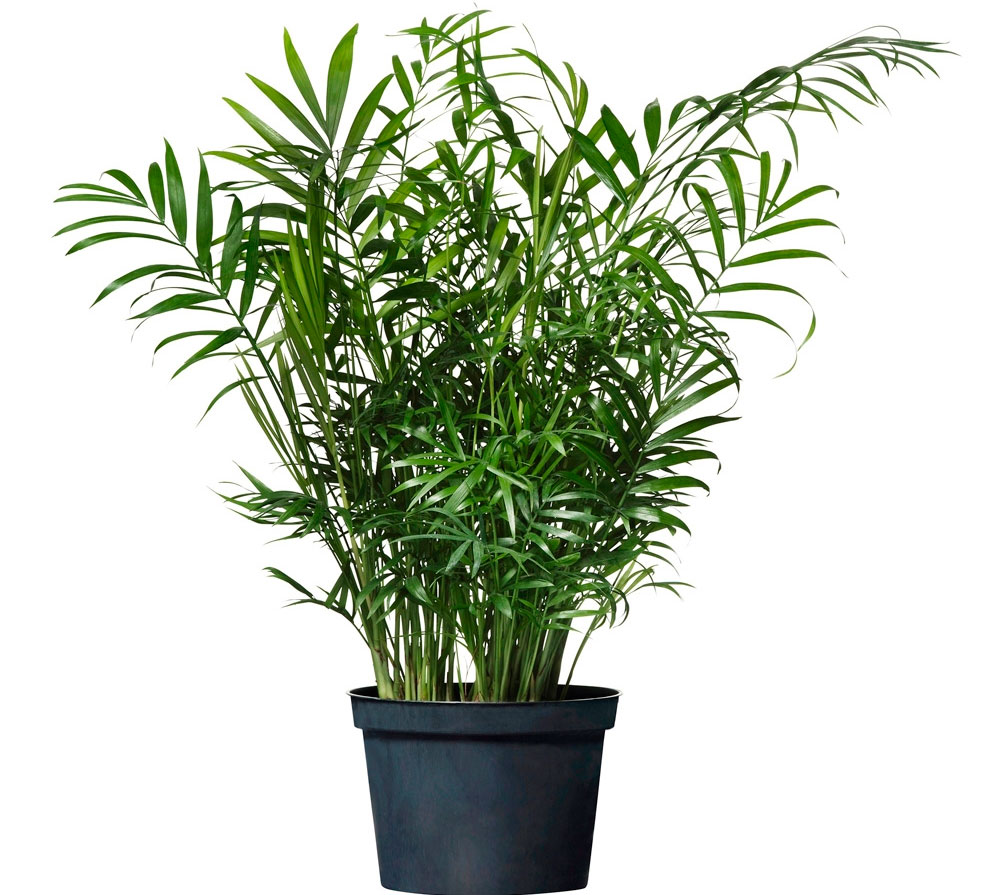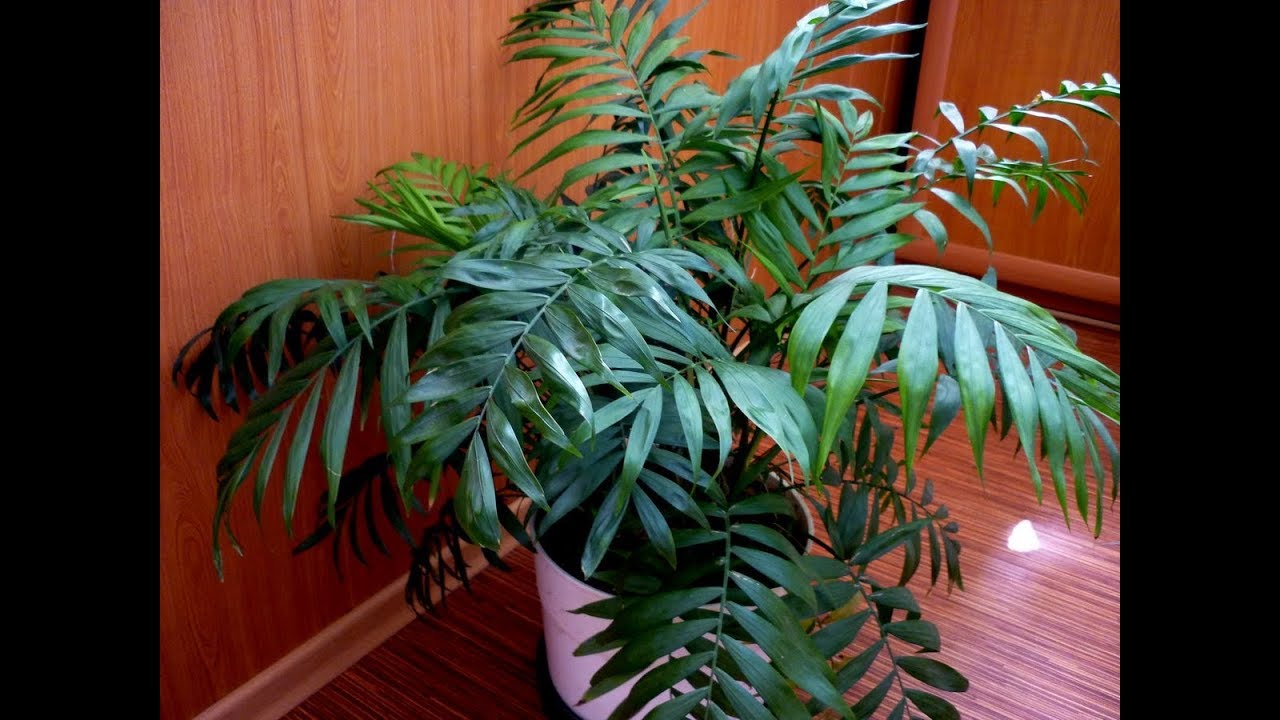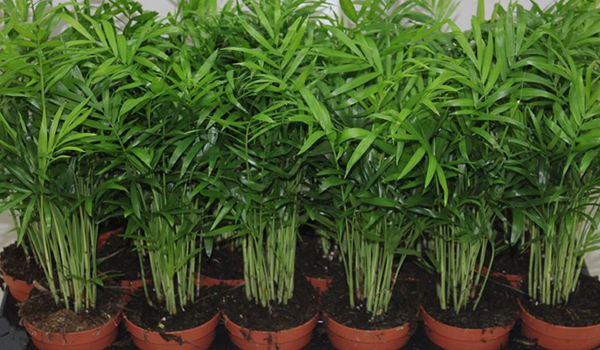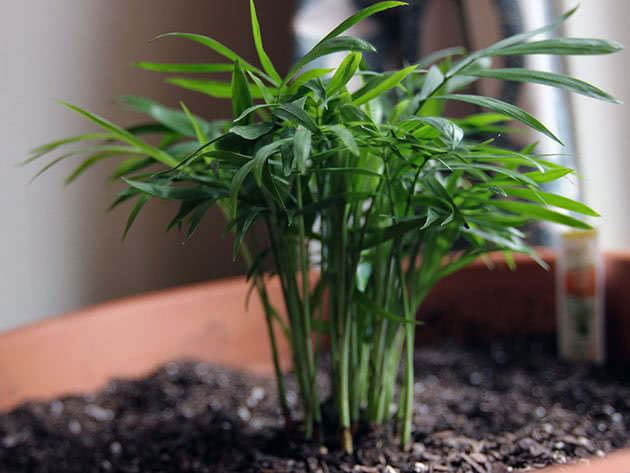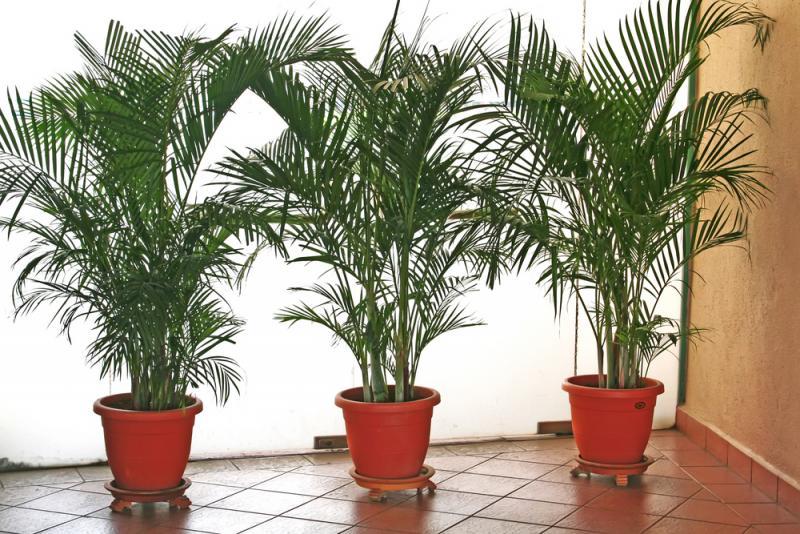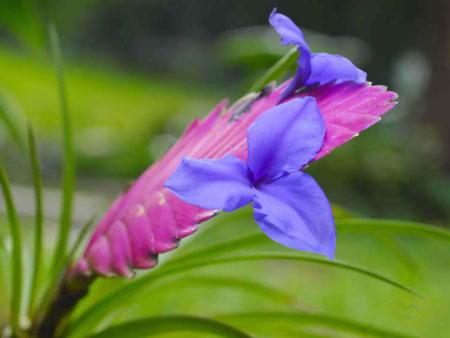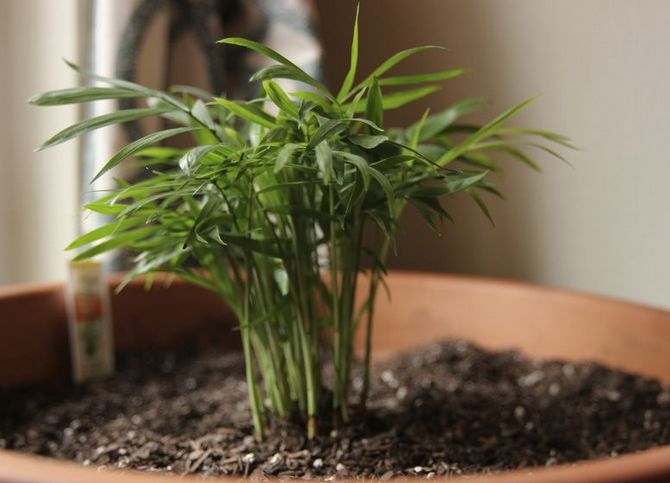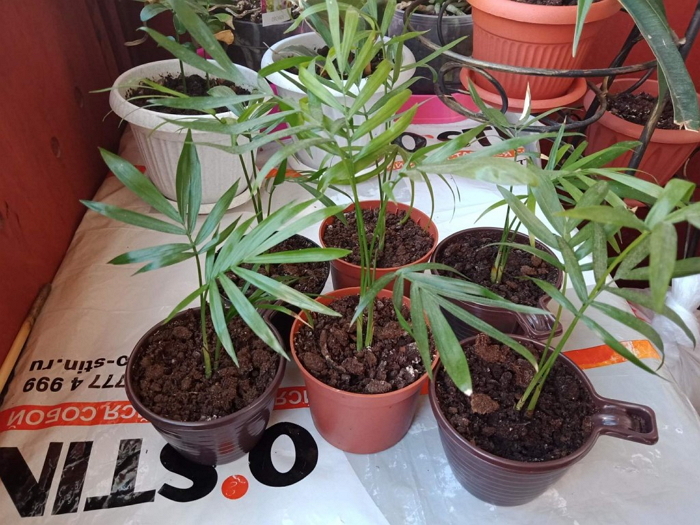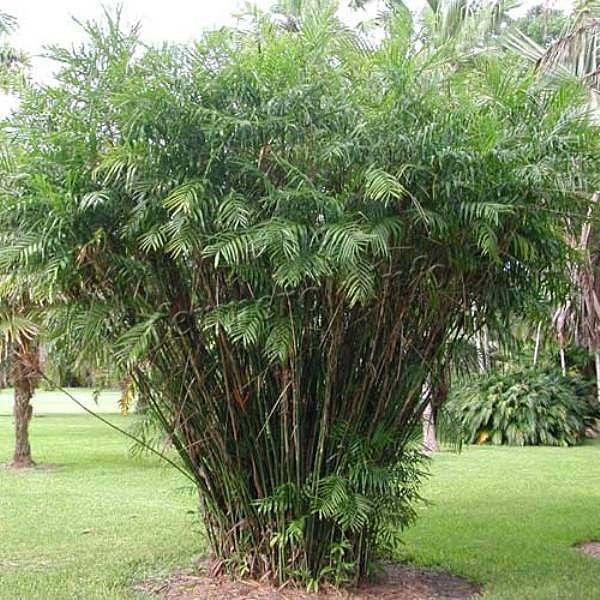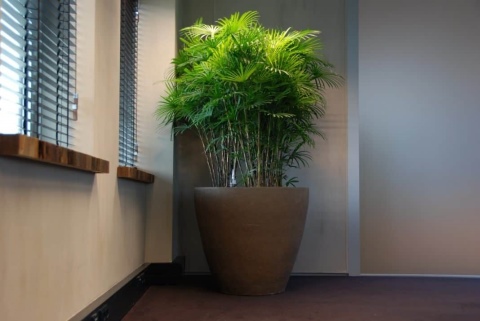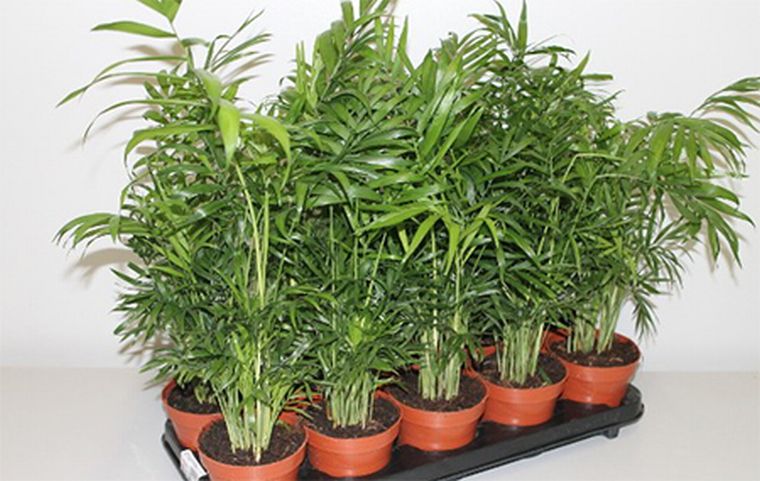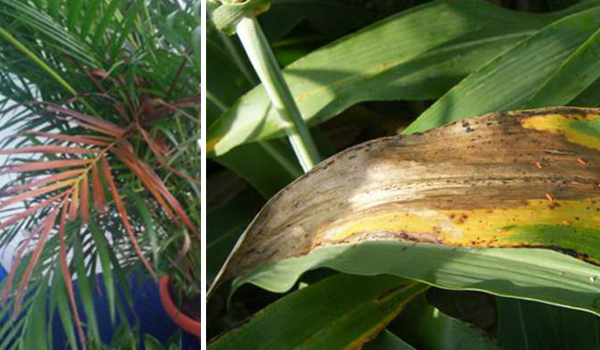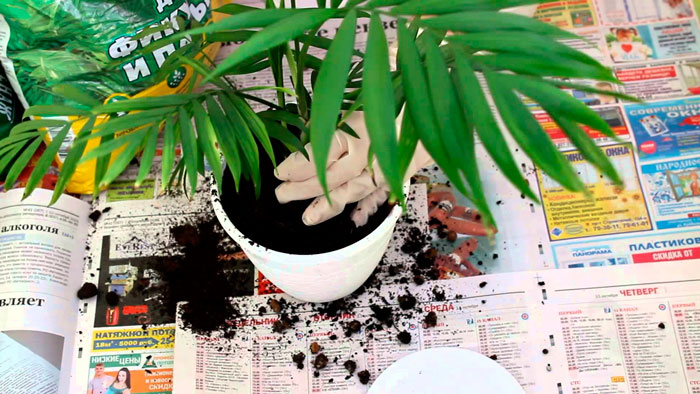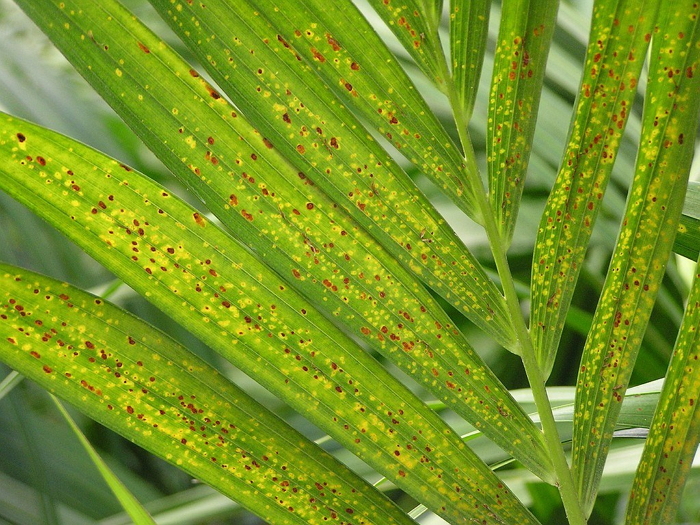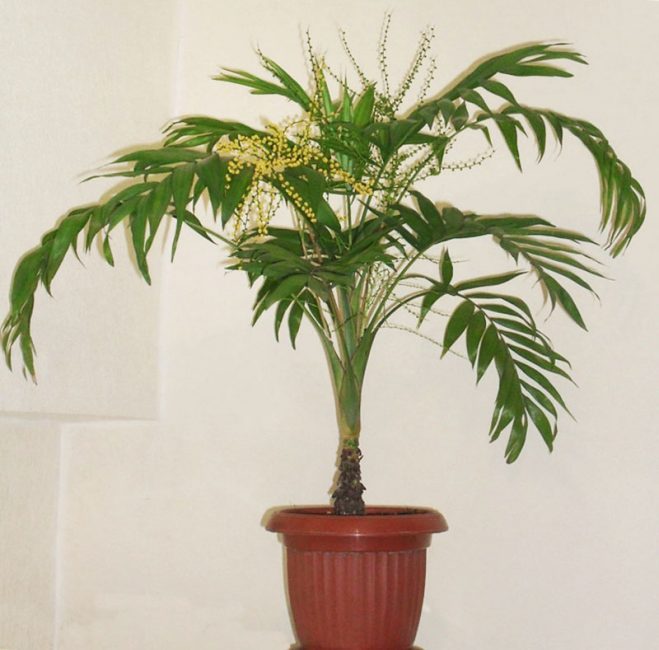Reproduction
Like any flowering plant, chamedorea has three main methods of reproduction: by seeds, offspring or "babies" and the classic division of the bush.
Seed propagation
In palm plants, it is used extremely rarely, since the survival rate and germination of seeds of this plant is very low. They are very capricious to storage conditions and the periods of this storage, even under ideal conditions, are very short.
The procedure itself is performed as follows:
- Before planting, the seeds are soaked in water for 100-120 hours. It is recommended to add a few drops of complex fertilizer to the water.
- In small, pre-prepared and disinfected pots with a standard substrate for palms, mix 2-3 seeds each and add them a little; falling asleep with a substrate can be omitted.
- Each pot is covered with plastic wrap to create a "greenhouse effect".
- Watering once every 2-3 days, airing once a day.
Seedlings will appear not earlier than in 3-6 months. After that, plastic shelters are removed from the pots, but the plants are transferred to a common greenhouse, where they stay for another 2 months until they are ready for independent growth.
Reproduction by offspring
The method is more common than seed. At the same time, young palms are separated, as a rule, already at the spring stage of plant care, during the next planned transplant. At the same time, it is necessary to understand that the separation of the "baby" without a root section is impossible, since it will not be able to take root normally, and, most likely, will die.

Offspring of hamedorea
In addition, this plant has sufficiently developed aerial roots, often forming simultaneously with the offspring. In this case, there is simply no better way to reproduce.
Reproduction by dividing the bush
Usually used in cases where several plants grew in large pots at once. It is produced at the end of spring, while the earthen lump is completely removed from the pot and the plant is completely freed from it.

Reproduction by dividing the bush
After that, a large bush is divided into several more or less equal smaller ones, each of which is transplanted into its own container according to the standard scheme. It is advisable to treat the instrument with an alcohol solution before cutting the roots.
10 varieties of bamboo for growing in Russia: description, home care and its features, reproduction (Photo & Video) + Reviews
1. Seven Secrets of Success:
| 1. Growing temperature: in spring and summer, when chamedorea is actively developing, it needs warm conditions - keep palms at an air temperature between 18 and 24 degrees Celsius. During the winter months, it is best to provide a cool dormant period at a temperature of 13-15 degrees Celsius. |
| 2. Lighting: shading from direct sunlight only during the daytime - in the morning and evening, plants can take sun baths. With a lack of natural light, chamedorrhea develops well under artificial lighting. |
| 3. Watering and air humidity: soft water at room temperature, watered in such a way that the top layer of soil 2-4 cm thick between waterings slightly dries out in spring and summer. In the fall and winter, keep watering frequency to a minimum, just being careful not to overdry the clod. Air humidity is high. |
| 4. Pruning: Palm trees only need sanitary pruning, which removes all old and diseased leaves. In order for the palm tree not to waste its energy on flowering and fruiting, only the peduncles that have appeared are cut off. |
| 5.Substrate: loose, well-drained, nutritious substrate with neutral or slightly acidic pH. |
| 6. Top dressing: from spring to autumn, regular dressing with mineral liquid fertilizers for palm trees or decorative leafy plants every 2 weeks. In the middle of autumn, the subcortex stops and renews them only in spring, with the appearance of the first signs of new growth. |
| 7. Reproduction: by sowing seeds in spring or by dividing large specimens during transplantation, by root suckers in spring and summer. |
Botanical name: Chamaedorea.
Hamedorea home - family
Homeland of the plant. Mexico, Guatemala.
Description. Evergreen low palm with several thin, graceful trunks.
The crown is formed by lush, feathery, compound leaves up to 60 cm long, consisting of many alternately located narrow-lanceolate segments.
Segments of leaves are glossy, green, 10 - 15 cm long, with longitudinal parallel venation. The edges of the leaf segments may be forked in some species.
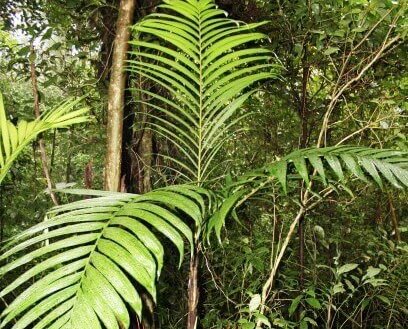
Inflorescences are branched, drooping or erect, composed of numerous yellow flowers. There are male and female flowers on different plants - that is, these palms are dioecious plants.
On female palms, small, rounded fruits are formed after flowering.
In some species of chamedorea, aerial roots may appear in the lower part of the trunk with age.
The second name is bamboo palm, the plant received for the external similarity of thin, graceful stems with bamboo shoots.
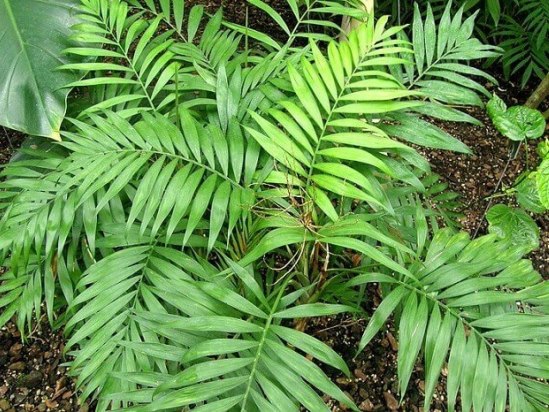
Height. The chamedorea palm tree grows slowly at home and in a potted culture often does not exceed 1 m.
In their natural habitat, these trees can grow up to 5 m in height.
There are miniature varieties, the height of which, when grown in pots, reaches only a few tens of centimeters.
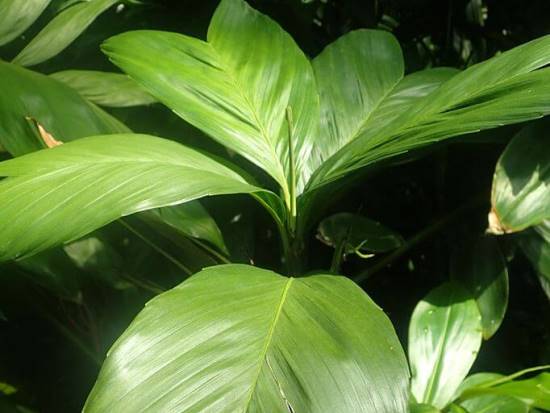
How hamedorea reproduces
There are several options for propagating this palm tree. By itself, this fact indicates a high probability of success in each case.
Germinating seeds
Reproduction of chamedorea by seeds is usually carried out when there is an adult fruit-bearing tree freely available (more precisely, several trees, since the species is dioecious). Seeds lose their germination very quickly, literally every month (the maximum shelf life is 10 months), so they are sown immediately after collection.

Chamedorea seed sprout
Before sowing, the seeds are soaked in water for 5-6 days, after scarification (each seed is slightly filed with a grindstone). You need to plant in cups with a capacity of 100 g, filled with a mixture of peat and sand. It is not necessary to bury the seed, but it should be watered and covered with a cap on top to create a greenhouse effect.
Optimum temperature for germination: +22 .. + 25 ° С. The freshest seeds will sprout in 2 months, and those that are on the verge of the expiration date will sprout only after 6-8 months. The sprout should be transplanted into a new container when its leaf grows to a length of 4 cm.
Rooting cuttings
This technique is suitable only for those types of chamedorea, in which the crown is formed in the form of a bush from several trunks. Any of the root suckers in an adult (over 3 years old) palm tree can be carefully separated and immediately planted in a mixture of peat and sand.

Rooting several cuttings at once
Air layering
At a bush of several trunks, one of the shoots is bent down to a pot with soil standing next to it. A small notch is made on the underside and smeared with Kornevin or cytokine paste. The place of the notch is immersed in the soil and secured with a hairpin.
If everything goes well, the roots on the shoot will appear within 2-3 months, after which the shoot can be cut off from the mother plant.
Other options
Usually chamedorea is divided at the time of transplant. The roots are washed from the soil under running water and carefully divided into parts. Then each part should be transplanted into a pot filled with fresh soil.
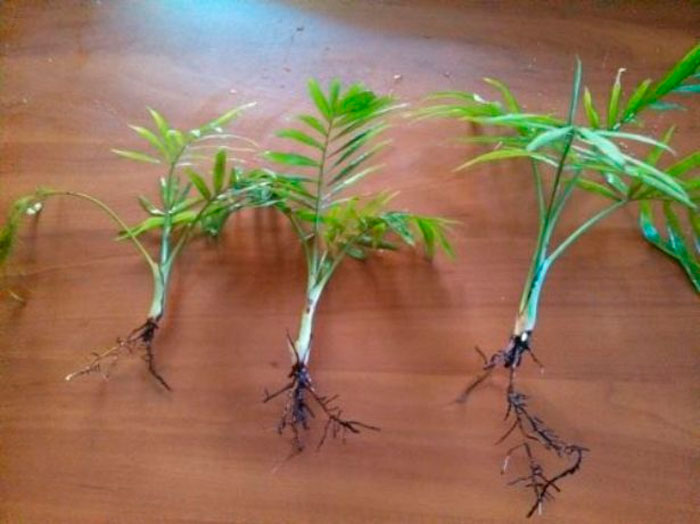
Several seedlings resulting from dividing a bush
Care requirements
Proper crop care at home is also very important.
Watering the plant
Practice has shown: it is best to use rainwater to feed chamedorea. In the warm season, the palm tree is actively developing and consumes a lot of moisture. Water in small doses, do not allow the earthen coma to dry out completely. But do not overfill chamedorea either! This will make her even worse - the roots will begin to rot. The same happens due to poor drainage and stagnant water.
Important! In winter, the drying of the top layer in the pot is allowed to a depth of 3-4 cm

Top dressing and fertilizers
The fertilization period is from April to the end of summer. Frequency - no more than 2 times a month. For feeding, purchase a special mineral composition in the form of granules or a solution. Prepare it according to the instructions.
Advice. Do not use conventional fertilizers for domestic crops for hamedorea.
Pruning technique
The procedure should be carried out all year round as needed. Damaged, diseased, dead leaves are pruned. Use a sharp secateurs or scissors. Be sure to wipe the tool with alcohol so as not to transfer fungi and bacteria to the healthy parts of the chamedorrhea. For the same reason, treat all trim points with fungicides after the procedure.
Culture transplant
Schedule work for April. Transplant chamedorea after filling the pot with roots. Young bushes - annually, mature - once every 3 years. It is advisable not to touch old and large specimens at all, but only to add new soil to the pot
Transfer the plant carefully along with the earthy clod. Cut off a part of the roots with a felt crust
Propagation of palm bush
At home, chamedorea is propagated by dividing the bush and seeds. The first way is much easier. Work is planned for May:
- Remove the bush from the container. Break the earthen ball under a weak stream of water.
- Separate parts of the plant.
- Place each in a separate pot. Water.
Seed propagation consists of a complex multi-step sequence of actions for processing and soaking the material, germinating it under strict conditions, and picking. Not all seeds germinate. Moreover, they quickly lose germination. And the sprout has been developing for more than a year.

Growing problems, diseases and pests
Low humidity leads to the appearance of mealybugs and spider mites on the greens. Dry leaf tips are the first sign of a plant's painful reaction to the dry atmosphere in the room. Waterlogging provokes the development of pink rot or leaf spot. Signs of decay are visible to the naked eye.
Normal phenomena for hamedorea:
- yellowing of individual leaves after purchase and transfer to a new place - adaptation;
- the dying off of the lower leaves is a natural process.
Hamedorea has been successfully adapted by humans. An indoor palm tree will decorate a spacious home if you strictly adhere to the cultivation technique.
Description of hamedorea
The chamedorea palm was introduced from Mexico, the central and southern American regions, where it grows in the highlands. In the wild, it is a small, graceful palm tree. It grows in height to about 2 m.The trunk is thin, the diameter does not exceed 3 cm.
Many types of plants are grown indoors, including palm trees. It is chamedorea that is very popular and widespread among them. They are used to decorate rooms, spacious offices, winter gardens.
Views
There are several dozen varieties and varieties of hamedorea. But only 3 of them are good for home growing. You can see how they look on the hamedorea photo.
- Ernest August. This plant is a bush. It grows up to 100-110 cm. It has a dense trunk resembling a reed. It develops up to 10 two-lobed leaves. During the flowering period, red flowers are formed. The plant has aerial roots, which distinguishes it from its counterparts.
- Graceful. Another name for it is hamedorea elegance. Grows up to 150 cm.It can be single-barreled or multi-barreled. The trunk is thin, the leaves are dark, feathery, 6 pieces on the trunks. The flowers are orange with a reddish tint.
- Monochrome. A hardy variety, unpretentious in care. Very similar to the type of elegance. The trunk is represented by internodes of leaf plates that have shrunk. The flowers of this plant are yellow.
Observing the recommended rules for growing a palm tree, you can grow a wonderful plant in indoor conditions that will decorate your house for many years.
Conditions for successful cultivation
Like other cultivated exotics, at home it is necessary to create an atmosphere close to the natural one for hamedorea.
The soil
Specialty shops sell land for palm trees. Ordinary potting soil will work as well. Recipe for self-cooking: turf soil, humus, peat, sand in equal proportions. All components must be disinfected!
Choosing a location in terms of lighting
An advantageous feature of room chamedorea is shade tolerance. There is no need to put a tub with a palm tree near a well-lit window. A small portion of the daily rays of the sun is enough for her. Summer - morning and evening. The rest of the time, hamedorea needs shading and diffused light. Artificial lighting is also suitable for growing.
Excellent places for a palm tree are a pier between the windows, a corner of the room not far from them. For a dwelling, chamedorea is a rather large plant. She prefers spacious rooms, halls, halls. Twice a month, turn the bush its other side to the light source. This technique will help support the symmetrical development of the bush.
Advice. In summer, Hamedorea needs fresh air. She is often taken out onto a loggia or balcony. In winter, airing is also helpful, but beware of drafts.
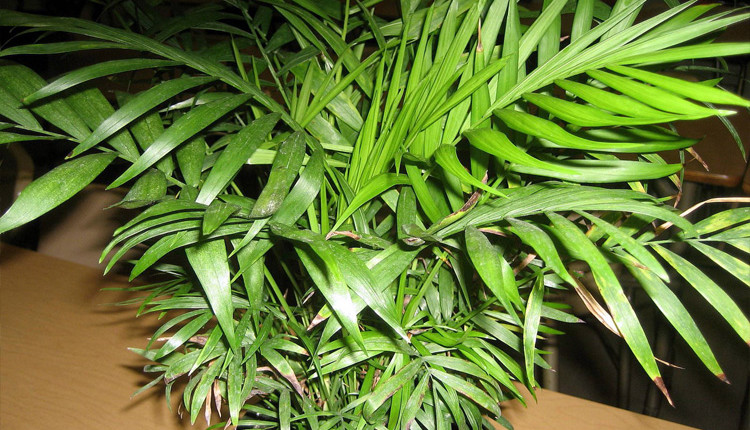
Temperature and humidity recommendations
The mini-palm treats the temperature regime democratically. In summer, provide it with a stable atmosphere at the level of + 16 ... + 20 ° С. In winter, it is colder by 4-5 ° C. Even if the recommended limits are violated, chamedorrhea will not react painfully if the fluctuations are not sharp and prolonged.
But the moisture content of the shrub is very important. Excessive dryness provokes disease and pest damage. To eliminate this factor, use the following techniques:
- in spring, summer, autumn, spray greens daily with soft, filtered or settled warm water;
- in winter, spraying is sometimes also required if the air in the room is dry;
- place a container of water next to the plant and refill it periodically.
Advice. Florists with a collection of such palms purchase a household air humidifier to care for them.


